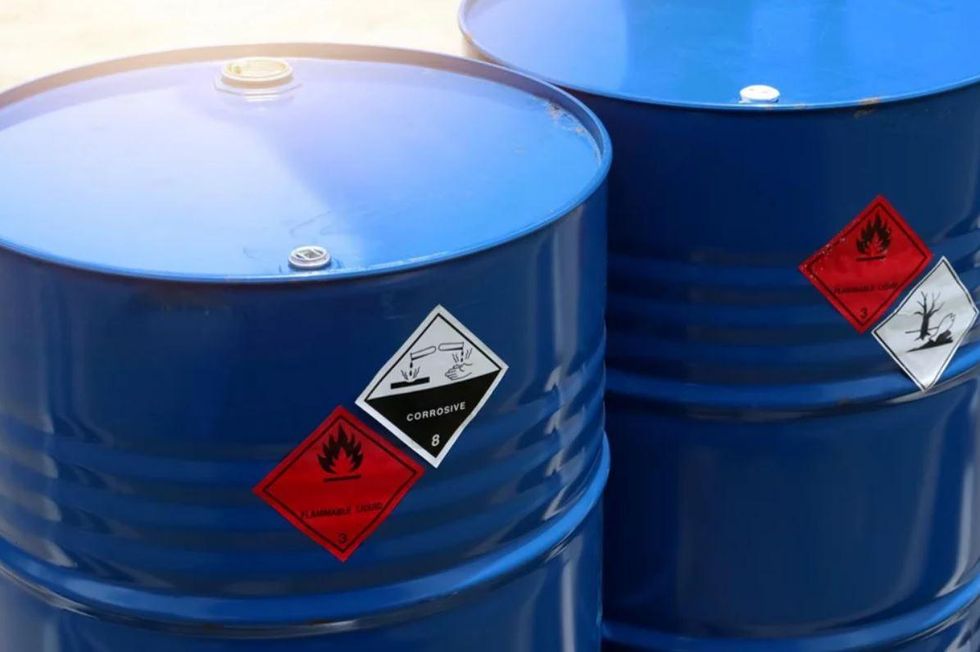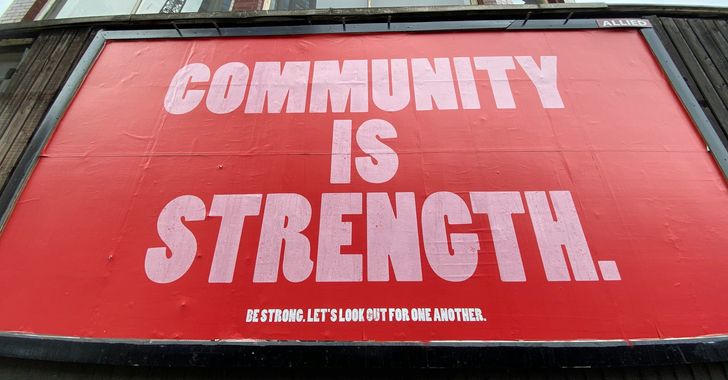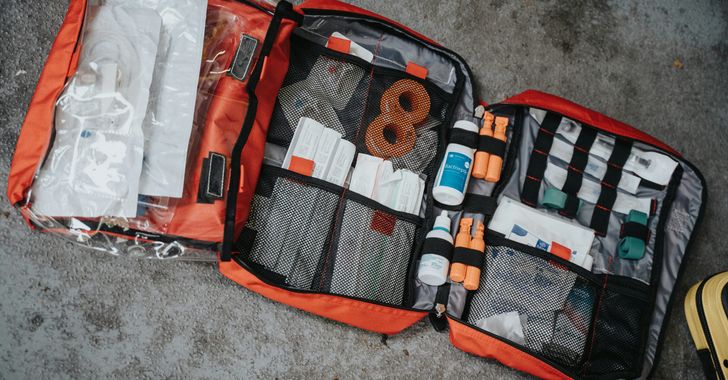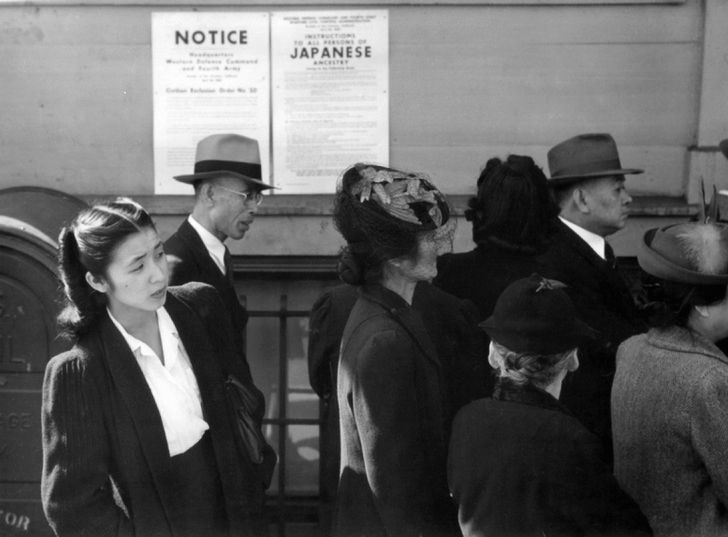Many workplaces such as laboratories, manufacturing facilities, oil and gas refineries, hospitals, and many others produce hazardous waste as part of their business processes. This means that employees of these organizations, whether directly or indirectly involved in specific work tasks, must be aware of the types of hazardous waste they are exposed to.
Imagine working at a hazardous waste site or another organization producing hazardous waste and not taking appropriate safety measures just because you are unaware of the type of hazardous waste you are exposed to.
Such a situation is not only scary but also dangerous for the safety and health of employees.
The Importance of Identifying the Type of Hazardous Waste
When hazardous waste is appropriately identified and categorized, organizations can appropriately manage, store, dispose of, and transport such waste in line with regulatory requirements. Furthermore, by identifying hazardous waste into the correct types, hazardous waste facilities and hazardous waste-producing organizations can implement precautions to protect workers, the community, and the environment from potential risks associated with hazardous waste. Also, accurate identification of hazardous waste can help organizations to comply with pertinent regulations averting fines and other penalties.
What is Hazardous Waste?
Any material that is unsafe or potentially harmful to human health or the environment is considered hazardous waste. Such wastes can be liquids, solids, gases, or sludges. Hazardous waste can be generated through several sources such as manufacturing facilities, hospitals, laboratories, and households. Common examples of hazardous waste include chemicals, batteries, medical waste, oil, and paints. Hazardous waste can contaminate soil and water, be detrimental to human health, and pollute the air.
“The United States Environmental Agency (EPA), defines hazardous waste as waste with properties that make it dangerous or capable of having a harmful effect on human health or the environment (n.d.).”
The 4 Types of Hazardous Waste
The EPA categorizes hazardous waste into the following types.
Each type is distinct and has different health and safety risks. Therefore, the way each type of hazardous waste is handled is also different. Let’s discuss each type of hazardous waste in detail.
Listed Waste
A listed waste is hazardous waste that has been identified and listed by the EPA. Chemical properties, adverse effects on human health or the environment, and other criteria are the basis for this categorization. Listed wastes are divided into four subtypes - F, K, P, and U Lists.
F-List Wastes
F-list wastes are non-specific source wastes that cannot be traced back to their point of origin. These wastes can be the result of industrial or manufacturing operations or a combination of both. F-list wastes are present in areas where waste has accumulated over time, such as landfills and garbage dumps. This waste type is difficult to manage as it is not clear how and from where it was generated, making it challenging to determine the best way of disposal or how to prevent its creation in the first place.
Depending upon the type of operation, F-list wastes are categorized into seven (7) groups:
- Spent solvent wastes,
- Electroplating and other metal finishing wastes,
- Dioxin-bearing wastes,
- Chlorinated aliphatic hydrocarbons production,
- Wood-preserving wastes,
- Petroleum refinery wastewater treatment sludges, and
- Multisource leachate.
K-List Wastes
The K-list includes hazardous wastes that are generated from specific industries or sources. K-list wastes are divided into two sub-categories:
- K001-K029: These are wastes generated from the production of petroleum and found in the refining, storage, and transportation of oil and gas. They are flammable, toxic, and corrosive.
- K031-K039: These wastes are produced by producing organic chemicals, plastics, and synthetic fibers. They are flammable, toxic, and reactive.
The EPA has identified 13 industries producing K-list hazardous waste. These include:
1.Petroleum refining
2.Inorganic chemicals manufacturing
3.Primary aluminum production
4.Ink formulation
5.Coking
6.Iron and steel production
7.Veterinary pharmaceuticals manufacturing
8.Inorganic pigment manufacturing
9.Secondary lead processing
10.Petroleum refining
11.Pesticides manufacturing
12.Organic chemicals manufacturing
13.Wood preservation
P and U- List Wastes
Wastes listed in P and U lists must meet the following three (3) criteria:
- The waste must comprise the chemicals that are listed on the P or U list;
- The waste chemical must be unused; and
- The waste chemical must be a commercial chemical product.
The complete list of F, K, P, and U wastes can be found here: Lists of Hazardous Wastes.
Characteristic Wastes
This second type of hazardous waste is identified by specific physical or chemical properties making them hazardous or possibly harmful to human health or the environment. These four properties are ignitability, corrosivity, reactivity, and toxicity.
- Ignitability: Wastes such as solvents, fuels, and certain cleaning agents that have a flash point of less than 140 degrees Fahrenheit, making them flammable through friction, absorption of moisture or sudden chemical changes fall within this characteristic.
- Corrosivity: Any waste such as batteries, drain cleaners, and certain acids and bases that decompose, rust, or melt through steel materials and have a pH lower than 2 or higher than 12.5 are considered to have this characteristic.
- Reactivity: Wastes such as explosives, peroxides, and certain pesticides are considered to be reactive if they are unstable and are at risk to explode or release toxic gases when mixed with other substances that fall within this characteristic.
- Toxicity: Heavy metals, pesticides, and certain medical wastes containing chemicals that can be harmful or deadly if ingested or inhaled are called toxic wastes.
Universal Wastes
This type of hazardous waste includes a range of commonly generated household and business waste items and is regulated at the federal level in the United States. Universal wastes are also known as commonly generated hazardous waste. Such wastes are further divided into the following five (5) categories.
1.Batteries - Universal waste batteries include lead-acid, nickel-cadmium, and lithium-ion batteries commonly used in vehicles, electronic devices, and industrial equipment.
2.Fluorescent lamps - These include fluorescent tubes, compact fluorescent lamps, and high-intensity discharge lamps used for lighting in homes, offices, and commercial buildings.
3.Electronic devices - Such as computers, monitors, printers, and cell phones that contain hazardous materials such as lead, mercury, and cadmium harmful to human health and the environment.
4.Mercury-containing equipment - Thermostats, thermometers, and switches containing mercury can be harmful as mercury is a toxic chemical perilous to human health and the environment.
5.Pesticides - Universal waste pesticides such as insecticides, herbicides, and rodenticides are hazardous if not properly managed.
The four types of regulated participants in the universal waste system are:
- Small quantity waste handlers accumulating less than 5,000 kg of universal waste
- Large quantity waste handlers accumulating 5,000 kg or more of universal waste),
- Transporters of universal waste and,
- Destination facilities of universal waste.
Mixed Wastes
Wastes containing both hazardous and radioactive materials are known as mixed wastes. There are three (3) categories of mixed waste.
- Low-level mixed waste (LLMW) - contains low-level radioactive wastes.
- High-level mixed waste (HLW) - contains high-level radioactive wastes.
- Mixed transuranic waste (MTRU) - contains both hazardous and transuranic (i.e., elements with atomic numbers greater than 92) materials.
These wastes are treated to separate the hazardous, radioactive, and transuranic components, and managed and disposed of separately.
Such wastes are typically generated by the nuclear industry, including nuclear power plants, research laboratories, and defense facilities. The main differences are:
The Perils of Hazardous Waste
Now that you can identify different types of hazardous waste, it is also important to know the dangers of such hazardous waste. Below are some common perils associated with hazardous wastes.
Toxic effects cause a range of health effects such as respiratory problems, skin irritation, and organ damage.
Fire and explosion risk due to the flammable nature of several hazardous waste types.
Environmental contamination: Leaked or discharged hazardous waste into waterways, land, and the atmosphere will contaminate soil, water, and air.
Read the article Which HAZWOPER Training Best Suits You? to identify your job-specific training
Train and Stay Protected!
Employers are mandated by regulators to protect employees exposed to hazardous waste, either in liquid, gaseous, or solid form by following the requirements for handling hazardous waste as per regulatory standards. This includes implementing proper engineering and administrative controls at the workplace. In addition, employers must provide workers with appropriate online training, on-the-job training, and personal protective equipment (PPE) as specified by OSHA’s HAZWOPER Standards and the EPA’s RCRA Program. Organizations transporting hazardous waste must comply with the U.S. Department of Transportation’s Hazardous Materials Regulations as needed.
HAZWOPER OSHA Training is reputed to develop and offer interactive and educational safety training programs reducing an employer’s burden to create training programs to meet the diverse regulations. By offering online training, client-site training, and virtual training, the company endeavors to cater to different organizational needs.
Learn about the HAZWOPER, RCRA, and DOT Hazmat Training Course by clicking here.
For more information, speak to our customer services personnel at 866.429.6742 or write to info@HAZWOPER-OSHA.com.
References:
- Code of Federal Regulations (CFR). (n.d.). Identification and Listing of Hazardous Waste. Website. https://www.ecfr.gov/current/title-40/chapter-I/subchapter-I/part-261
- United States Environmental Protection Agency (EPA). (n.d.). Defining Hazardous Waste: Listed, Characteristic and Mixed Radiological Wastes. Website. https://www.epa.gov/hw/defining-hazardous-waste-listed-characteristic-and-mixed-radiological-wastes



 women in street dancing
Photo by
women in street dancing
Photo by  man and woman standing in front of louver door
Photo by
man and woman standing in front of louver door
Photo by  man in black t-shirt holding coca cola bottle
Photo by
man in black t-shirt holding coca cola bottle
Photo by  red and white coca cola signage
Photo by
red and white coca cola signage
Photo by  man holding luggage photo
Photo by
man holding luggage photo
Photo by  topless boy in blue denim jeans riding red bicycle during daytime
Photo by
topless boy in blue denim jeans riding red bicycle during daytime
Photo by  trust spelled with wooden letter blocks on a table
Photo by
trust spelled with wooden letter blocks on a table
Photo by  Everyone is Welcome signage
Photo by
Everyone is Welcome signage
Photo by  man with cap and background with red and pink wall l
Photo by
man with cap and background with red and pink wall l
Photo by  difficult roads lead to beautiful destinations desk decor
Photo by
difficult roads lead to beautiful destinations desk decor
Photo by  photography of woman pointing her finger near an man
Photo by
photography of woman pointing her finger near an man
Photo by  closeup photography of woman smiling
Photo by
closeup photography of woman smiling
Photo by  a man doing a trick on a skateboard
Photo by
a man doing a trick on a skateboard
Photo by  two men
two men  running man on bridge
Photo by
running man on bridge
Photo by  orange white and black bag
Photo by
orange white and black bag
Photo by  girl sitting on gray rocks
Photo by
girl sitting on gray rocks
Photo by  assorted-color painted wall with painting materials
Photo by
assorted-color painted wall with painting materials
Photo by  three women sitting on brown wooden bench
Photo by
three women sitting on brown wooden bench
Photo by 
 Photo by
Photo by  Photo by
Photo by  Photo by
Photo by  Photo by
Photo by 


 people sitting on chair in front of computer
people sitting on chair in front of computer



 all stars lol GIF by Lifetime
all stars lol GIF by Lifetime two women talking while looking at laptop computerPhoto by
two women talking while looking at laptop computerPhoto by  shallow focus photography of two boys doing wacky facesPhoto by
shallow focus photography of two boys doing wacky facesPhoto by  happy birthday balloons with happy birthday textPhoto by
happy birthday balloons with happy birthday textPhoto by  itty-bitty living space." | The Genie shows Aladdin how… | Flickr
itty-bitty living space." | The Genie shows Aladdin how… | Flickr shallow focus photography of dog and catPhoto by
shallow focus photography of dog and catPhoto by  yellow Volkswagen van on roadPhoto by
yellow Volkswagen van on roadPhoto by  orange i have a crush on you neon light signagePhoto by
orange i have a crush on you neon light signagePhoto by  5 Tattoos Artist That Will Make You Want A Tattoo
5 Tattoos Artist That Will Make You Want A Tattoo woman biting pencil while sitting on chair in front of computer during daytimePhoto by
woman biting pencil while sitting on chair in front of computer during daytimePhoto by  a scrabbled wooden block spelling the word prizePhoto by
a scrabbled wooden block spelling the word prizePhoto by 
 StableDiffusion
StableDiffusion
 StableDiffusion
StableDiffusion
 StableDiffusion
StableDiffusion





